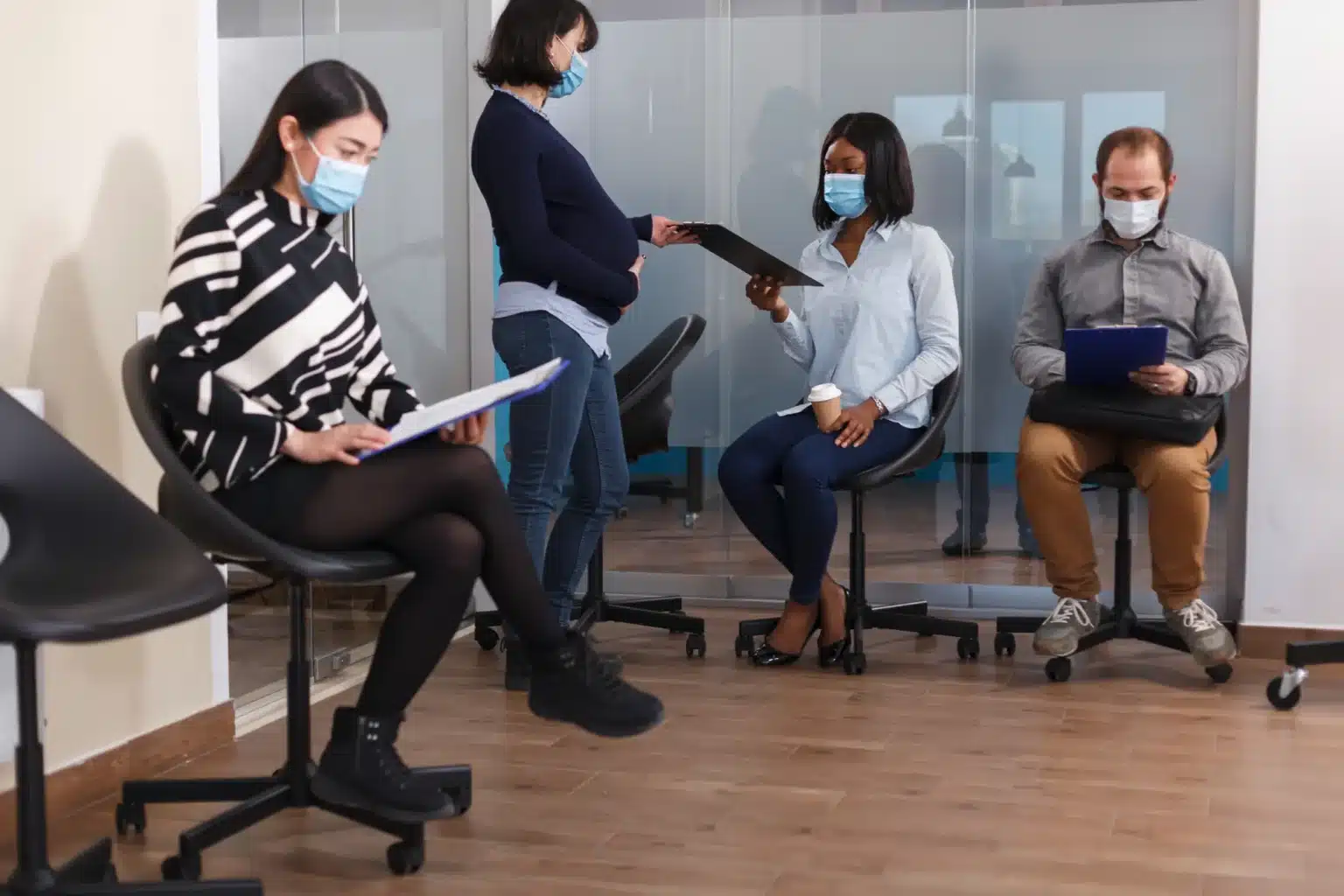Learn more about:
HPV Vaccine (HPV-4)
Recommended for: Individuals at risk of HPV-related diseases, especially young people before exposure to HPV, and those with a higher risk of infection or complications.
Disease prevented: HPV-related cancers
Price:
₱3,800.00
Find the Nearest SureVax Location:
The HPV-4 vaccine protects against four major strains of the human papillomavirus (HPV), which are responsible for most cases of cervical cancer, as well as other types of cancer and genital warts. It significantly reduces the risk of HPV-related illnesses and is a key preventive measure, especially for those in their teens and early adulthood.


₱3,800.00
The HPV-4 vaccine protects against four major strains of the human papillomavirus (HPV), which are responsible for most cases of cervical cancer, as well as other types of cancer and genital warts. It significantly reduces the risk of HPV-related illnesses and is a key preventive measure, especially for those in their teens and early adulthood.
Find the Nearest SureVax Location:
The HPV vaccine guards against cervical, anal, and other genital cancers, along with genital warts. It targets high-risk HPV strains that account for the majority of HPV-related cancers.
The quadrivalent HPV vaccine covers two HPV strains linked to cancer and two strains that cause genital warts, offering broad protection against both.
Safe and well-tolerated, with common side effects like mild soreness at the injection site or temporary dizziness. Severe reactions are extremely rare.
Optimal protection is achieved before HPV exposure, so the vaccine is typically recommended for preteens and young adults, though older individuals can still benefit if not previously vaccinated.
Should you get vaccinated? Who should consider the HPV vaccine and why?
Priority Beneficiaries
Description
Preteens and
Adolescents
Vaccinating at a young age, typically between 9 and 14, ensures protection before any exposure to HPV. Since the immune response is stronger in younger individuals, early vaccination provides lasting immunity and lowers future risks of HPV-related cancers and infections.
Young Adults
For individuals in their teens and early 20s who may not have had prior exposure, the HPV vaccine offers valuable protection as they reach an age where HPV exposure becomes more likely. The vaccine reduces the chance of infection and its associated health risks, including cancers and genital warts.
Those with a Higher Risk of HPV Complications
For immunocompromised individuals or those with health conditions that increase cancer risk, the HPV vaccine provides a crucial preventive measure. It lowers the likelihood of severe HPV-related complications, helping maintain better long-term health.
Partners and Spouses
People with new or multiple partners, or those whose partners may be at risk, can benefit significantly from the vaccine’s preventive protection. By reducing HPV transmission, vaccination also helps protect partners and minimizes the spread of the virus within close relationships.
Healthcare and Public Health Workers
Healthcare professionals, especially those who may encounter HPV-positive patients, gain valuable protection with the HPV vaccine. Reducing their risk of infection also supports the broader goal of community health and reduces transmission rates.
Should you get vaccinated? Who should consider the HPV vaccine and why?
Preteens and Adolescents
Primary Beneficiaries
Vaccinating at a young age, typically between 9 and 14, ensures protection before any exposure to HPV. Since the immune response is stronger in younger individuals, early vaccination provides lasting immunity and lowers future risks of HPV-related cancers and infections.
Young Adults
Primary Beneficiaries
For individuals in their teens and early 20s who may not have had prior exposure, the HPV vaccine offers valuable protection as they reach an age where HPV exposure becomes more likely. The vaccine reduces the chance of infection and its associated health risks, including cancers and genital warts.
Those with a Higher Risk of
HPV Complications
Primary Beneficiaries
For immunocompromised individuals or those with health conditions that increase cancer risk, the HPV vaccine provides a crucial preventive measure. It lowers the likelihood of severe HPV-related complications, helping maintain better long-term health.
Partners and Spouses
Primary Beneficiaries
People with new or multiple partners, or those whose partners may be at risk, can benefit significantly from the vaccine’s preventive protection. By reducing HPV transmission, vaccination also helps protect partners and minimizes the spread of the virus within close relationships.
Healthcare and
Public Health Workers
Primary Beneficiaries
Healthcare professionals, especially those who may encounter HPV-positive patients, gain valuable protection with the HPV vaccine. Reducing their risk of infection also supports the broader goal of community health and reduces transmission rates.
The Flu Vaccine (Quadrivalent) offers broad protection against four strains of influenza, reducing the risk of seasonal flu and promoting a healthier, more resilient immune system.
Prevents Cancer
The HPV vaccine significantly reduces the risk of HPV-related cancers, including cervical, throat, and genital cancers.
Contributes to Public Health
Widespread vaccination helps reduce the overall prevalence of HPV in the population, creating herd immunity and lowering transmission rates.
Enhances Peace of Mind
The vaccine reduces the stress and worry about contracting HPV-related diseases, allowing people to feel more secure in their health.
Empowers Preventative Care
The vaccine empowers individuals to take proactive steps in protecting their health, which can contribute to an overall sense of well-being and responsibility.
Promotes Gender-neutral Protection
The vaccine benefits all genders, offering protection across diverse populations and helping to reduce stigma associated with HPV.
The HPV-4 vaccine guards against four common strains of HPV, significantly lowering the risk of cervical cancer and other HPV-related conditions.
Prevents Cancer
The HPV vaccine significantly reduces the risk of HPV-related cancers, including cervical, throat, and genital cancers.
Contributes to Public Health
Widespread vaccination helps reduce the overall prevalence of HPV in the population, creating herd immunity and lowering transmission rates.
Enhances Peace of Mind
The vaccine reduces the stress and worry about contracting HPV-related diseases, allowing people to feel more secure in their health.
Empowers Preventative Care
The vaccine empowers individuals to take proactive steps in protecting their health, which can contribute to an overall sense of well-being and responsibility.
Promotes Gender-neutral Protection
The vaccine benefits all genders, offering protection across diverse populations and helping to reduce stigma associated with HPV.
Learn more about the HPV-4 vaccine, including who it’s for and how it protects against HPV-related diseases.
What is the HPV-4 vaccine?
The HPV-4 vaccine (Gardasil) protects against four types of human papillomavirus (HPV): types 6, 11, 16, and 18. These strains are responsible for most cases of cervical cancer and genital warts.
Who should get the HPV-4 vaccine?
● Recommended for all adolescents aged 11-12 years
● Catch-up vaccination available for:
● Females aged 13-26 years
● Males aged 13-21 years
● Men who have sex with men through age 26
● Immunocompromised individuals through age 26
How is the vaccine administered?
The vaccine is given as three separate shots over 6 months:
● First dose: Initial vaccination
● Second dose: 2 months after first dose
● Third dose: 6 months after first dose
What are the benefits of vaccination?
● Prevents up to 90% of cervical cancers
● Prevents 90% of genital warts
● Protects against several other HPV-related cancers
● Provides long-lasting immunity
What are common side effects?
Most side effects are mild and include:
● Pain at injection site
● Swelling and redness
● Mild fever
● Headache
● Fatigue
Is the vaccine safe?
Yes. The vaccine has been extensively tested and monitored since its approval in 2006. Over 270 million doses have been administered worldwide with a strong safety record.
Does insurance cover the HPV-4 vaccine?
Most private insurance plans cover the vaccine for recommended age groups. The Vaccines for Children (VFC) program provides free vaccines to eligible children. Check with your insurance provider or local health department for coverage details.
Can I get HPV from the vaccine?
No. The vaccine contains virus-like particles but no live virus, making it impossible to get HPV from vaccination.
Do vaccinated individuals still need cervical cancer screening?
Yes. Vaccinated individuals should still get regular cervical cancer screening as recommended by their healthcare provider, as the vaccine doesn't protect against all HPV types that can cause cancer.
What if I miss a dose?
If you miss a dose, you don't need to restart the series. Schedule the missed dose as soon as possible and complete the remaining doses according to the recommended schedule.
Learn more about the HPV-4 vaccine, including who it’s for and how it protects against HPV-related diseases.
What is the HPV-4 vaccine?
The HPV-4 vaccine (Gardasil) protects against four types of human papillomavirus (HPV): types 6, 11, 16, and 18. These strains are responsible for most cases of cervical cancer and genital warts.
Who should get the HPV-4 vaccine?
<ul
- Recommended for all adolescents aged 11-12 years
- Catch-up vaccination available for:
- People with chronic health conditions
- Males aged 13-21 years
- Men who have sex with men through age 26
- Immunocompromised individuals through age 26
How is the vaccine administered?
The vaccine is given as three separate shots over 6 months:
- First dose: Initial vaccination
- Second dose: 2 months after first dose
- Third dose: 6 months after first dose
What are the benefits of vaccination?
Consult your healthcare provider if you:
- Prevents up to 90% of cervical cancers
- Prevents 90% of genital warts
- Protects against several other HPV-related cancers
- Provides long-lasting immunity
What are common side effects?
Most side effects are mild and include:
- Pain at injection site
- Swelling and redness
- Mild fever
- Headache
- Fatigue
Is the vaccine safe?
Yes. The vaccine has been extensively tested and monitored since its approval in 2006. Over 270 million doses have been administered worldwide with a strong safety record.
Does insurance cover the HPV-4 vaccine?
Most private insurance plans cover the vaccine for recommended age groups. The Vaccines for Children (VFC) program provides free vaccines to eligible children. Check with your insurance provider or local health department for coverage details.
Can I get HPV from the vaccine?
No. The vaccine contains virus-like particles but no live virus, making it impossible to get HPV from vaccination.
Do vaccinated individuals still need cervical cancer screening?
Yes. Vaccinated individuals should still get regular cervical cancer screening as recommended by their healthcare provider, as the vaccine doesn't protect against all HPV types that can cause cancer.
What if I miss a dose?
If you miss a dose, you don't need to restart the series. Schedule the missed dose as soon as possible and complete the remaining doses according to the recommended schedule.
It’s better to be safe than sorry.
Get vaccinated today.
Book your vaccination today!
Resources:

Shingles in Younger Adults: What You Need to Know
While shingles is commonly associated with older adults, younger adults can also develop the condition, particularly if they have weakened immune systems. Shingles, or herpes

Postherpetic Neuralgia: Understanding the Lingering Pain After Shingles
Shingles can cause more than just a temporary rash. In some cases, individuals experience a lingering pain known as postherpetic neuralgia (PHN), which occurs after

